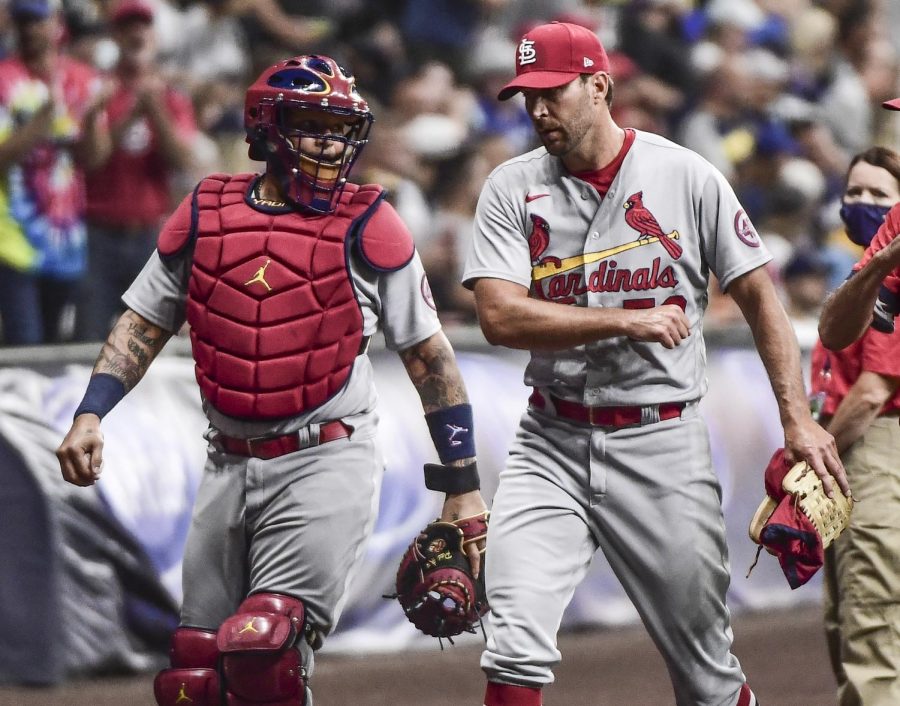Why Yadier Molina, not Buster Posey, is the best catcher of his generation
Published November 4, 2021
There’s a difference between “best catcher of a generation” and “best-hitting catcher of a generation.” Today, I will explain why that is. An example: Yadier Molina and Buster Posey.
A tweet from Barstool Sports sparked this debate.
Buster Posey, The Best Catcher Of His Generation, Is Set To Announce His Retirement Tomorrow https://t.co/uTW4PeyBka pic.twitter.com/GcM0zMio4j
— Barstool Sports (@barstoolsports) November 4, 2021
Today, Posey will announce his retirement, a somewhat expected announcement even after a season where he hit .301 and compiled a .889 OPS. He put together a great career for the San Francisco Giants, including a hitting clinic.
Posey was Rookie of the Year in 2010 and won the MVP award in 2012–both seasons where the Giants won the World Series. He caught 1,093 games and played in 229 games at first base over those years, doing what most catchers do as they reach the latter years of their career and move to a less-rigorous position.
Molina did the opposite. If Father Time is considered tough, the longtime St. Louis Cardinals catcher deserves a different word. In every season where he has been a starter and there wasn’t a pandemic-shortened season, Molina has started at least 100 games. He’s done that 16 times in a season, collecting nine Gold Glove awards during that time and catching a staggering 2,107 games.
Altogether, Molina has caught 17,666.1 innings in his career, while Posey has caught 1,093 games and 9,291.1 innings behind home plate. Basically, the Cardinals catcher has doubled Posey’s output at the position. It doesn’t make sense to call the former the best catcher when he’s only started 100 games in a season in seven of his 12 seasons. Barstool and other pundits do this because of how great of a hitter Posey was. Awards voters can attach the idea of a gold glove performer to how well he performs without a bat in his hands, unfortunately.
One of Molina’s more impressive attributes, outside of the records he accumulates every season, is the endurance at the game’s toughest position. And that’s not just being able to crouch down and catch baseballs season after season but being very good at an older age. Molina has thrown out more than 40% of would-be base stealers in 12 of his 16 seasons–including 45% and 41% the past two seasons. Posey never topped 40% once in his career. The league average for that span of time was right around 28%. Posey was above average, but Molina was unreal.
All of this isn’t meant to bring Posey down on the day he decides to hang it up; it’s clarity on a long-overlooked subject in baseball. A single Gold Glove award win doesn’t make you a great catcher. Winning your ninth at the age of 35 makes you a great catcher; Posey is retiring at 34 years of age. The two players are in separate categories when it comes to playing the position. Heck, Kansas City Royals catcher Salvador Perez is closer to Molina in the conversation of best catcher of his generation.
But you can’t sleep on Molina’s hitting. Not only has he managed to stay durable and productive over the years, he taught himself-no hitting coaches philosophy required-how to be a good hitter. He has double-digit home runs in seven seasons and averaged 30 doubles per season. He’s averaged just 67 strikeouts per year while racking up 41 walks on average over his career. A .280 batting average looks quite nice too.
Posey is a good catcher. Perez is a very good catcher. Molina is simply something else: an average hitter in a power hitter’s game while dominating at catcher. More than that, he’s changed the way his position could and should be played, helping the relationship between a pitcher and his battery mate evolve during his time in the league. It’s on another level. Decades from now, people will be talking about Molina’s prowess behind the plate and teaching their kids how to be like him.
There’s a moderate difference between “best catcher” and “best-hitting catcher,” and you won’t find a better example of that than Yadier Molina and Buster Posey.















